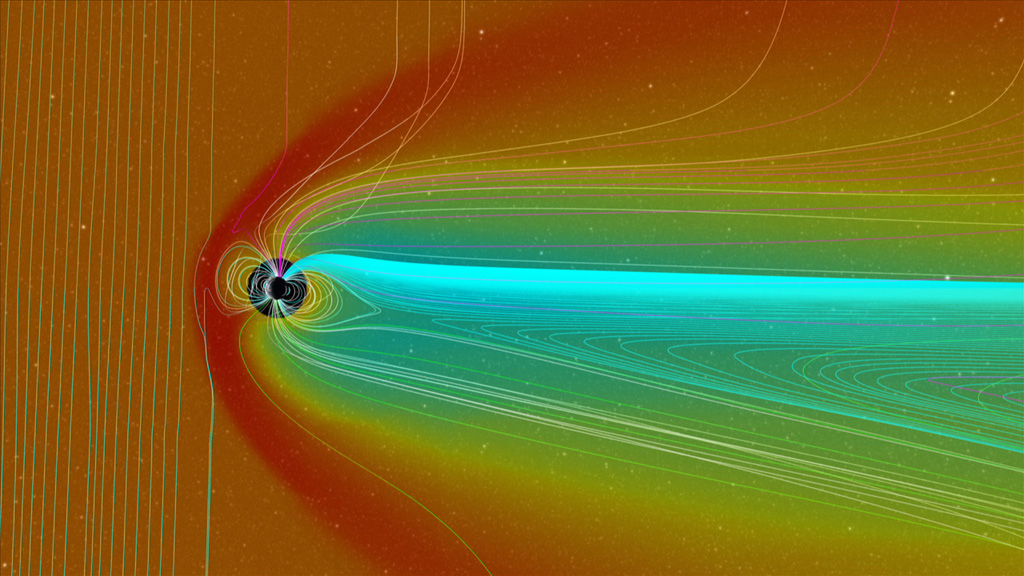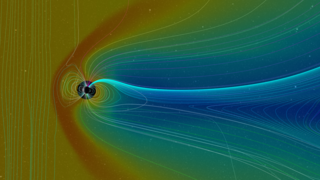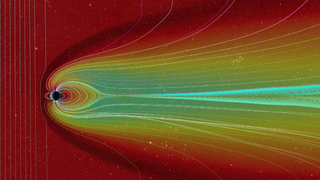Sun
ID: 11689

Surrounding Earth is a giant magnetic field called the magnetosphere. Its shape is defined not only by the planet's north and south magnetic poles, but also by a steady stream of particles coming in from the sun called the solar wind. The magnetosphere is buffeted by this wind and can change shape dramatically when the sun lets loose an immense cloud of gas known as a coronal mass ejection. To understand and predict the impact of such space weather events on Earth, the Community-Coordinated Modeling Center at NASA’s Goddard Space Flight Center routinely runs computer simulations of past eruptions. Solar storms can inflict serious damage on things like power grids and Earth-orbiting satellites. The simulations let scientists estimate the consequences of outbursts of different magnitude, helping us to better plan for the future. Watch the video to learn more.



Modeling Earth's Magnetism




Related Stories
Story Credits
Lead Visualizer/Animator:
Tom Bridgman (Global Science and Technology, Inc.)
Video Editor:
Genna Duberstein (USRA)
Narration:
Tom Bridgman (Global Science and Technology, Inc.)
Narrator:
Tom Bridgman (Global Science and Technology, Inc.)
Producer:
Genna Duberstein (USRA)
Lead Scientist:
Michael Hesse (NASA/GSFC)
Lead Writer:
Karen Fox (ADNET Systems, Inc.)
Tom Bridgman (Global Science and Technology, Inc.)
Video Editor:
Genna Duberstein (USRA)
Narration:
Tom Bridgman (Global Science and Technology, Inc.)
Narrator:
Tom Bridgman (Global Science and Technology, Inc.)
Producer:
Genna Duberstein (USRA)
Lead Scientist:
Michael Hesse (NASA/GSFC)
Lead Writer:
Karen Fox (ADNET Systems, Inc.)
Please give credit for this item to:
NASA's Scientific Visualization Studio
NASA's Scientific Visualization Studio
Short URL to share this page:
https://svs.gsfc.nasa.gov/11689
Keywords:
SVS >> App
NASA Science >> Sun
https://svs.gsfc.nasa.gov/11689
Keywords:
SVS >> App
NASA Science >> Sun









